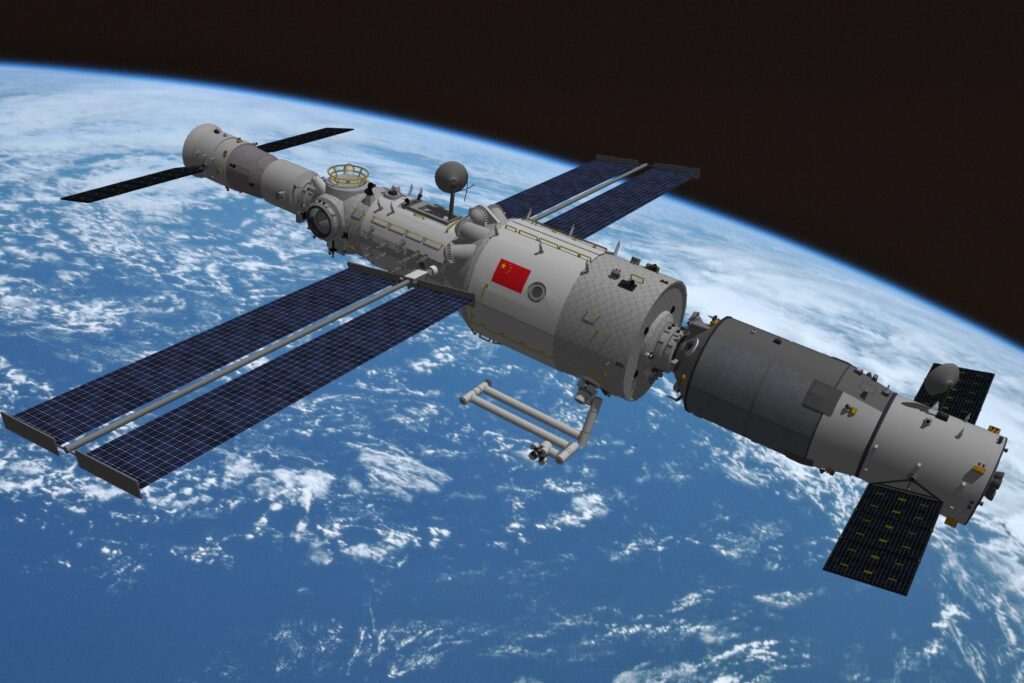China has informed the United Nations Office for Outer Space Affairs (UNOOSA) that China’s space station was twice forced to conduct evasive maneuvers to avoid near-collisions with satellites launched by SpaceX’s Starlink program.
The two close encounters between China’s space station and Starlink 1095 and Starlink 2305 satellites occurred on July 1 and October 21, 2021, respectively, according to a document submitted by China to the UNOOSA in December 2021.
I confirmed the Starlink/Chinese Space Station conjunctions on Jul 1 at 1315 UTC (S-1095) and Oct 21 at 2200 UTC (S-2305), with CSS orbit adjustmets at about 0950 UTC Jul 1 and 0316 UTC Oct 21. The Oct passes shown here: pic.twitter.com/DmbIucpRPF
— Jonathan McDowell (@planet4589) December 28, 2021
The note from China reminded the UN secretary general that “States Parties to the Treaty shall bear international responsibility for national activities in outer space, including the moon and other celestial bodies, whether such activities are carried on by governmental agencies or by non-governmental entities, and for assuring that national activities are carried out in conformity with the provisions set forth in the present Treaty”.
At a press conference on December 28, 2021, Zhao Lijian, a spokesperson at China’s foreign ministry, urged the United States to act more responsibly in space following the incident, which according to Chinese foreign ministry posed a “grave threat to the safety of astronauts”.
Jonathan McDowell, astronomer for the Harvard-Smithsonian Center for Astrophysics, told the Guardian that lodging such a complaint through an informational bulletin is unusual because “things are just getting a lot busier and a lot more crowded” in space.
He admitted that Starlink is a big part of space overcrowding but also noted that China is no exception, citing previous similar incidents involving the ISS and China.
“It’s not like the Chinese had a clean record here. The biggest debris event ever was the Chinese anti-satellite test,” McDowell explained.
China successfully launched Tianhe, a core module of the China Space Station in 2021. It is expected that the CSS will be fully operational by 2022. By then, four crewed and seven uncrewed missions will have taken place. It is estimated that the Chinese station will remain in orbit for at least a decade.
Named Tiangong (‘Heavenly Palace’), the CSS will be a third of the size of the International Space Station (ISS), closer in dimension to Mir, the late Soviet space station that orbited the Earth between 1986 and 2001.

